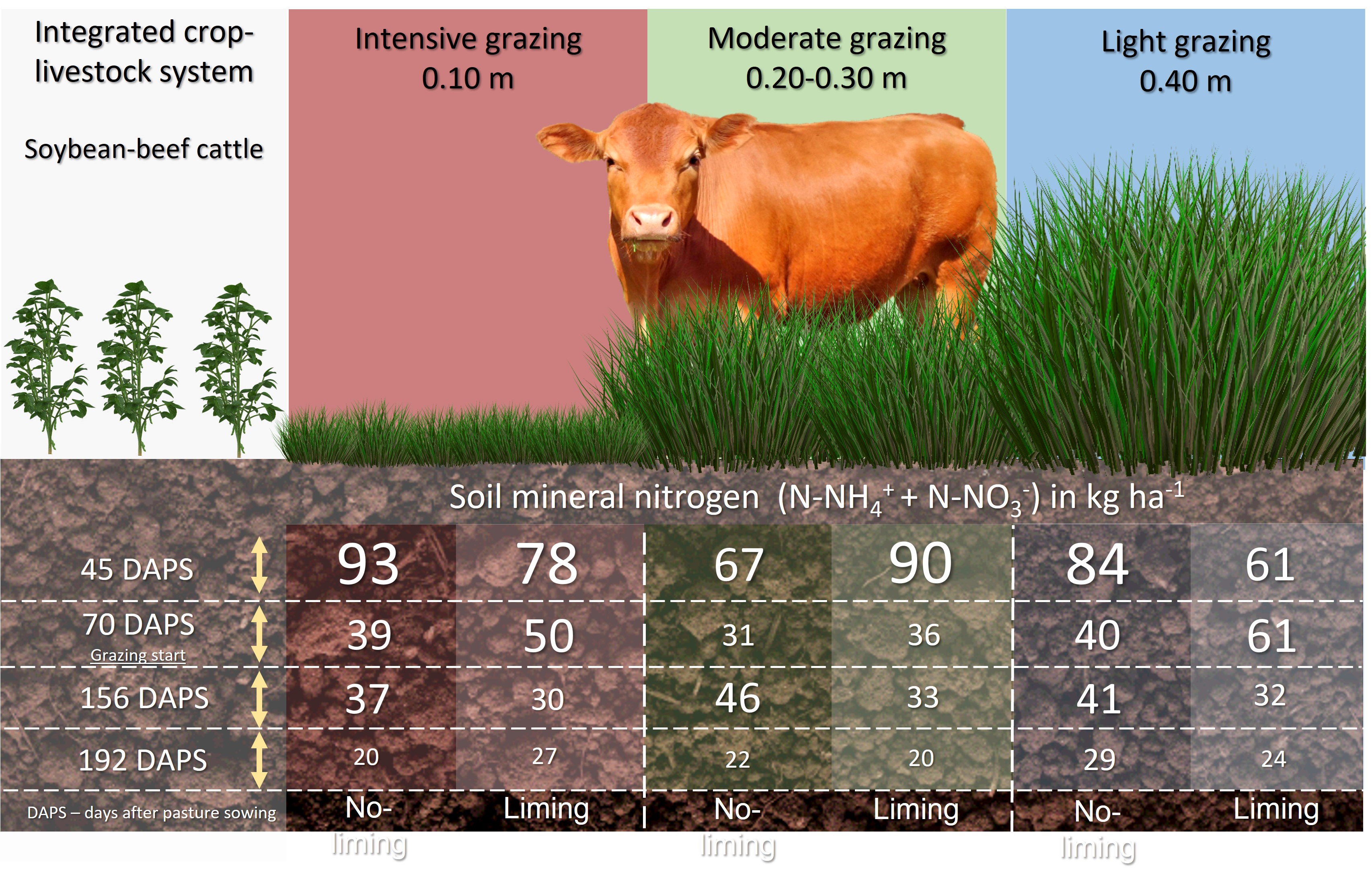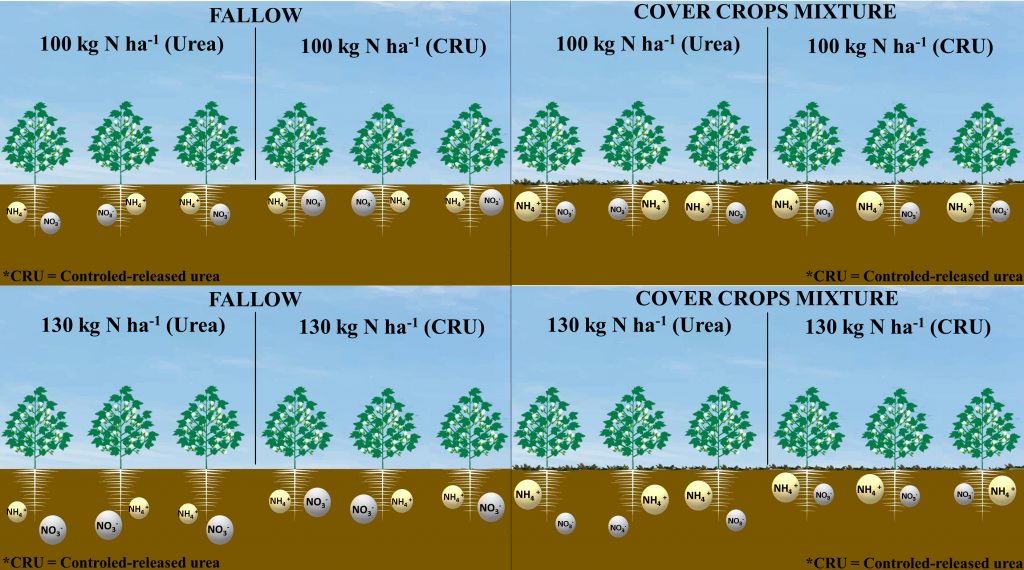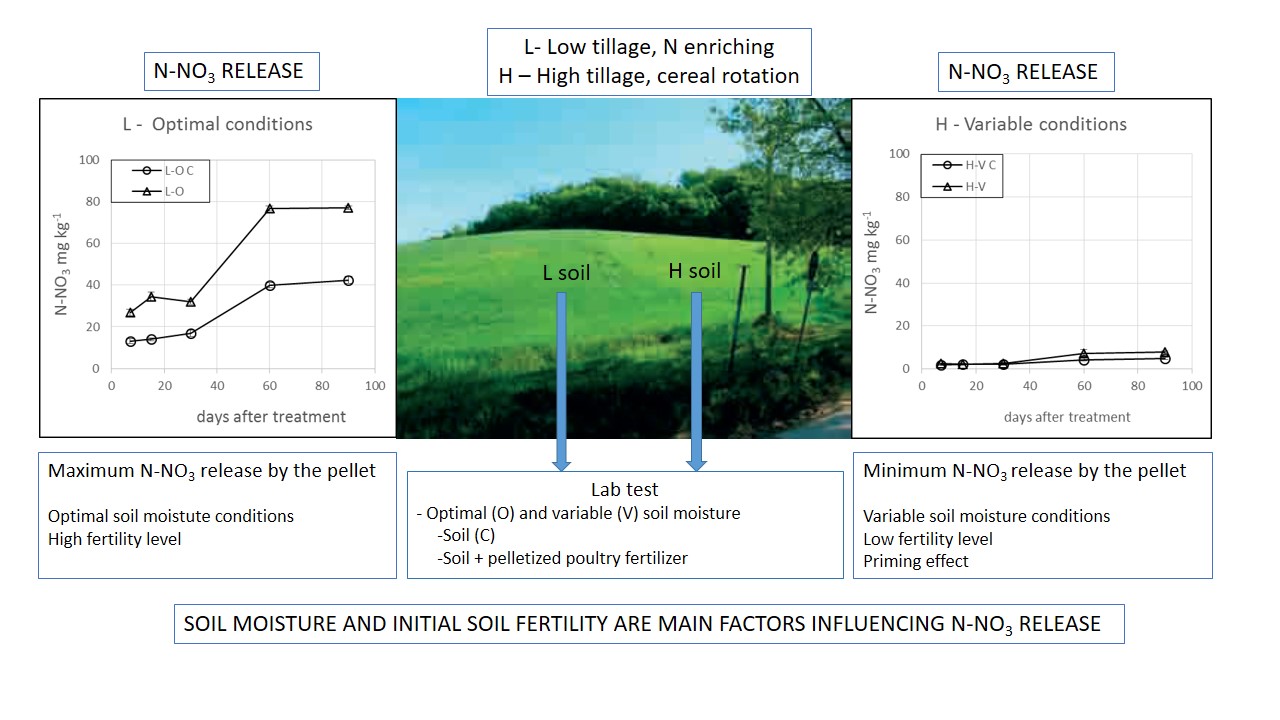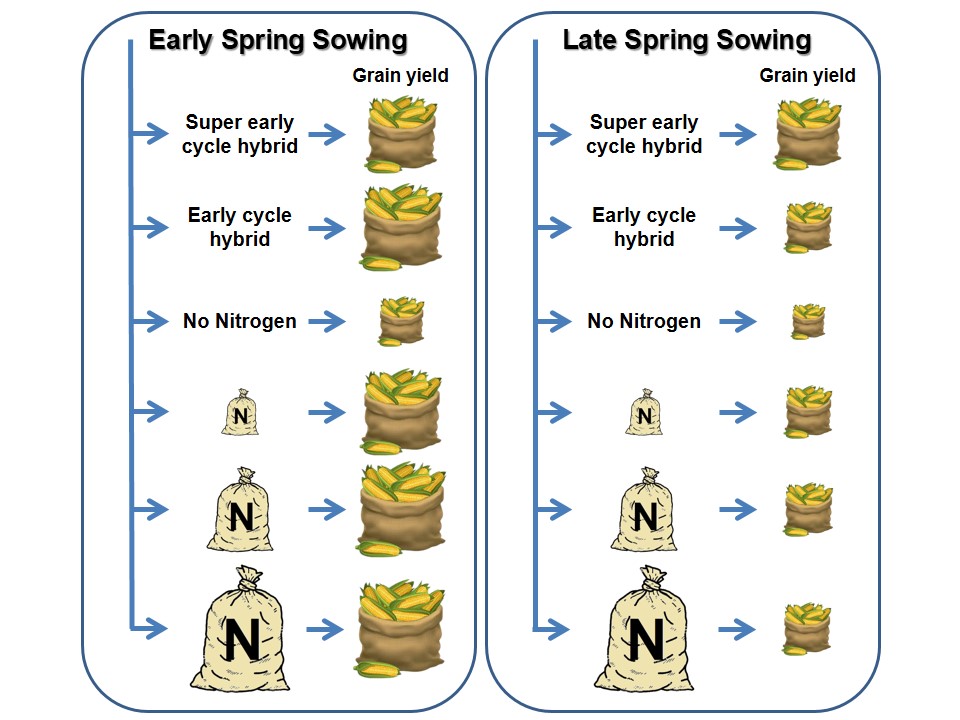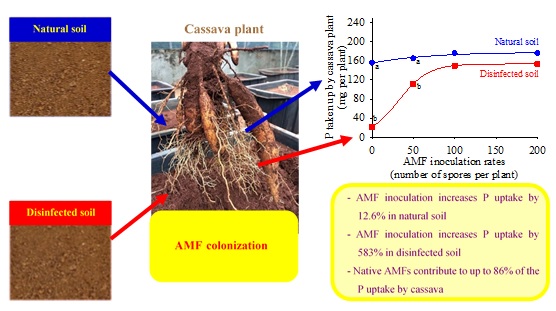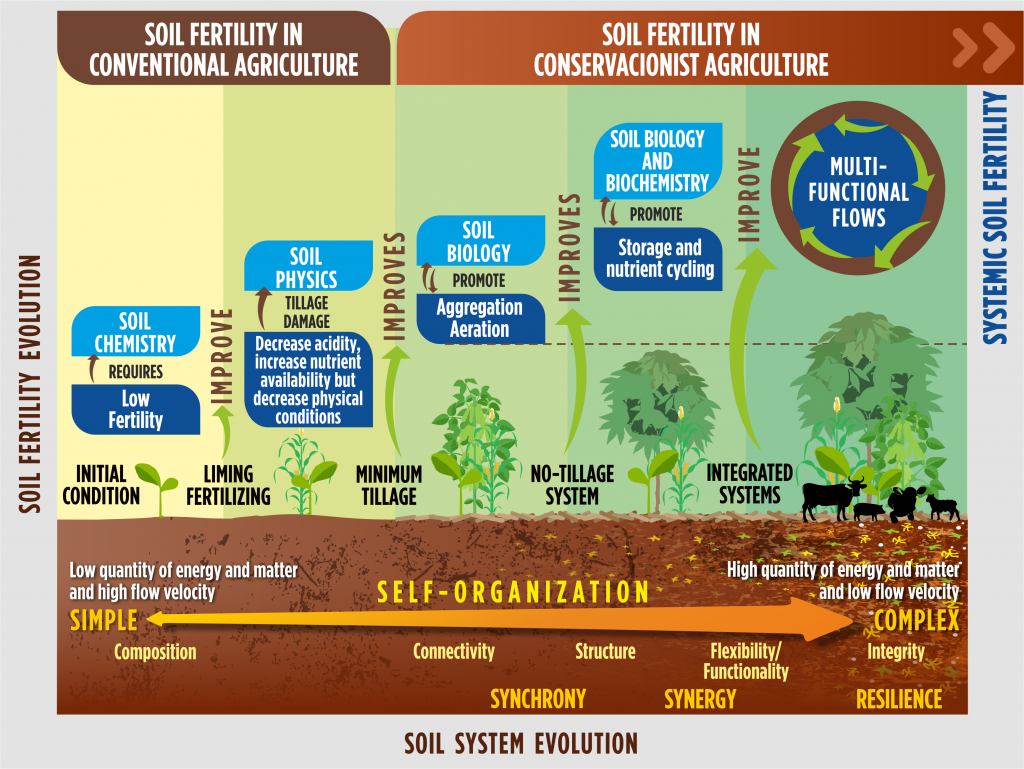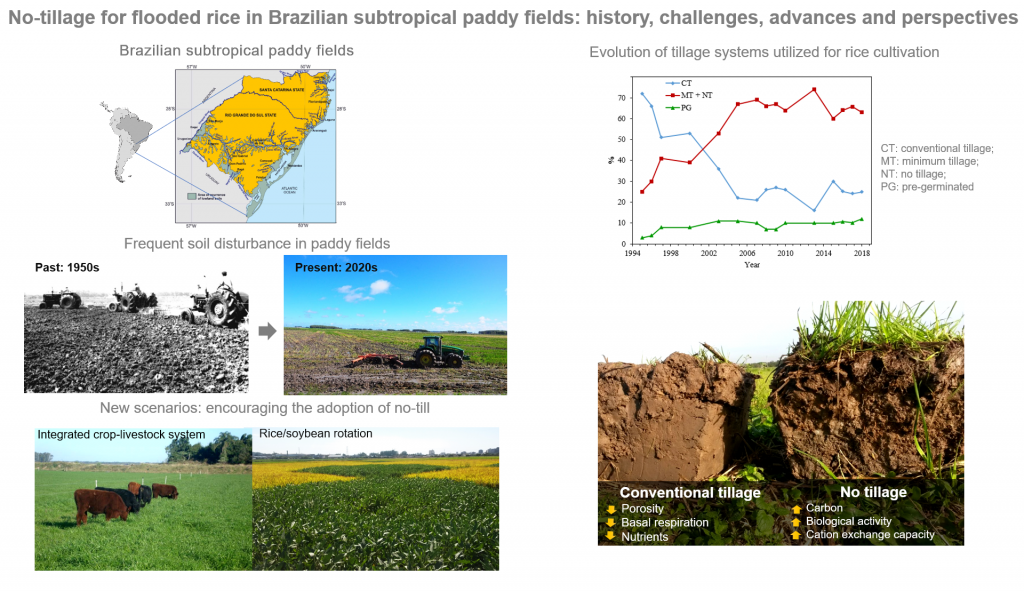Liming and grazing intensities effects on soil mineral nitrogen throughout the pasture cycle in a subtropical integrated crop-livestock system
06/Apr/2022
ABSTRACT Grazing intensity is a preponderant factor for the success of integrated crop-livestock systems (ICLS). Management of grazing intensity impacts soil organic matter (SOM) dynamics, soil reacidification process, and amount and quality of residues added to the ICLS. Consequently, the soil mineral nitrogen (N) forms may present different behavior throughout the pasture cycle, because they are directed linked to SOM and soil acidity dynamics. This study aimed to evaluate the impact of grazing intensities and liming in the temporal variation […]
Cover crops and controlled-release urea decrease nitrogen mobility and improve nitrogen stock in a tropical sandy soil with cotton cultivation
02/Feb/2022
ABSTRACT Sandy soil often has low nitrogen (N) stock. Thus, crops grown in sandy soil rely on high levels of N fertilization. The use of cover crops and efficient fertilizers can increase N stock in the soil and N availability in the topsoil, and reduce overall fertilizer costs. The objective of this study was to evaluate the effects of cover crops (fallow, a single grass species (ruzigrass), two grass species (ruzigrass + millet), one grass species (millet) with legumes [lime-yellow […]
Rainfall erosivity estimation: Comparison and statistical assessment among methods using data from Southeastern Brazil
02/Feb/2022
ABSTRACT Rainfall erosivity (R factor) is one of the six factors of the Universal Soil Loss Equation, being calculated based on the product of rainfall kinetic energy multiplied by its 30-minute maximum intensity. However, the lack of detailed and reliable rainfall data in many parts of the world has driven the use of other methods to estimate rainfall erosivity based on daily, monthly or annual data. These methods still need to be assessed to determine if their estimates are consistent […]
Nitrogen release from pelletized poultry fertilizer in two soils: influence of soil moisture and microbial biomass
28/Jan/2022
ABSTRACT Nitrogen release from organic amendments, e.g., from organic agriculture, is a key process to raise soil fertility to sustain crop production in low environmental impact agroecosystems. This study aimed to investigate nitrogen release from a pelletized organic amendment containing poultry litter, guano and pot ale applied to soil from a field under two different management systems: an alfalfa-based crop rotation, enriched with N by the legume, under low-intensity tillage and a cereal-sunflower crop rotation under high-intensity tillage. Both sample […]
Nitrogen use efficiency and grain yield of corn hybrids as affected by nitrogen rates and sowing dates in subtropical environment
13/Jan/2022
ABSTRACT Delay of sowing date in subtropical environments with long growing seasons can modify the yield response of corn hybrids to nitrogen (N) fertilization. This study evaluated the effects of the sowing time, and N top-dress rate on corn hybrids’ yield and N-use efficiency with different cycles. Two field experiments were carried out in subtropical environment of southern Brazil. The following factors were investigated: corn hybrids (AG9025, super early cycle and P30F53, early cycle), sowing times (early and late spring), […]
Adoption of the no-tillage system in Paraná State: A (re)view
13/Jan/2022
ABSTRACT The concept of a no-tillage system (NTS), or “Sistema Plantio Direto,” was established in Brazil from the evolution of no-tillage (NT) or “Plantio Direto,” given the edaphoclimatic conditions and the need to promote chemical, physical and biological improvements in cultivated soils. While “Plantio Direto” is a conservationist practice, “Sistema Plantio Direto” presents itself as an agricultural production system based on the simultaneous adoption of minimum soil disturbance, maintenance of permanent soil cover and crop rotation. This study reviews the […]
Growth and phosphorus uptake by cassava in P-deficient soil in response to mycorrhizal inoculation
30/Nov/2021
ABSTRACT Phosphorus (P) is one of the most difficult nutrients for plants to acquire because of its low content in the soil solution. Cassava (Manihot esculenta Crantz) has a thick and sparse absorbent root system; therefore, it is dependent on its association with arbuscular mycorrhizal fungi (AMF) for P acquisition from the soil. Thus, inoculation of cassava with AMF can improve the development of this root crop. This study evaluated the effects of soil disinfection (disinfected vs. natural) and the […]
Systemic Soil Fertility as product of system self-organization resulting from management
24/Nov/2021
ABSTRACT: Soil Fertility is one of the most relevant fields of Soil Science related to agricultural production, especially in tropical and subtropical environments, due to the prevalence of weathered and naturally unproductive soils. However, indicators of Soil Fertility currently used do not represent what actual happens in the soil; once must be understood as a process. The wisdom of this importance occurred in Antiquity and evolved until the mid-19th century, when the mineralist concept was proposed, which is still dominant […]
No-tillage for flooded rice in Brazilian subtropical paddy fields: history, challenges, advances and perspectives
24/Nov/2021
ABSTRACT: No-tillage (NT) has been one of the main advances related to soil management in Brazilian agriculture in the last 30 years. However, its full adoption in lowland areas that are traditionally cultivated with flooded rice is still incipient (<5 %). The main reasons are associated with the soil hydromorphic condition and the management of highly recalcitrant residual crop biomass, demanding soil disturbance even occasionally. This review presents a historical survey about the soil management systems utilized in lowland areas […]
Biogenic and physicogenic aggregates: formation pathways, assessment techniques, and influence on soil properties
24/Nov/2021
ABSTRACT: The soil particles can be gathered through physical and/or chemical processes in association with the biological activity, leading to the formation of aggregates. Soil aggregates has several functions in the soil, increasing macroporosity and water circulation – consequently reducing soil erosion and mechanical resistance to root growth, contributing to greater fixation of plants to the soil and absorption of water and nutrients, and protection of intra-aggregate organic matter. The aggregates were initially classified morphologically and in terms of their […]

